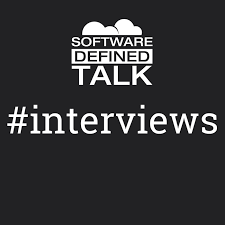
I recently joined Michael Coté (former RedMonk analyst!) on his podcast Software Defined Interviews to talk about some of my research. You should give it a listen, but here’s a quick recap of some of the things we cover:
Ratios
We talk about the ratio section of my 5 Minute Finance piece, and covered some of the things that can be confusing about ratios.
- Q: Why are some ratios stated as a decimal vs. a fraction vs. a percentage?
A: Largely it’s based on convention, but there are some formats that make sense given then nature of the ratio. For instances, some numbers reflect a part of a whole (like gross margin) and thus make sense to be shown as a percentage. Other numbers, like the P/E ratio, can be greater than 1 so it makes sense to express them as multiples. -
Q: How can you best understand what’s driving a ratio?
A: We use ratios because they can give us points of comparability over time and across organizations, but if you’re trying to understand driving factors it’s also worthwhile to compare the component numbers of the ratio. Remember that the number can be deconstructed, and you can examine the underlying trends of the numerator and denominator for increased visibility into the ratio.
Interviews
We also talked about my recent interviewing advice to early-career job candidates.
- Q: What are you supposed to do in a lunch interview?
A: Your goal is to display that you are socially cohesive with the team. You need to stay professional, but try to relax a bit and follow their lead. (e.g. try to choose something that is relatively in the same price range as what they choose, don’t be the only one to order a starter salad, etc.) The easiest way to do this is to let them order first; tell the waiter you haven’t quite decided yet if they try to start with you and then take cues from the group.
Remember that your primary goal is to chat, and since we don’t eat with our mouths full, your primary goal is thus not to eat but to converse. This lunch is not about the food, it’s about the people.
Don’t pick something messy to eat. Don’t order alcohol. -
Q: When the tables are reversed and you’re the interviewer, what questions do you like to ask?
A: I’m a big believer that many skills can be taught, so I ask questions that screen for evidence of traits like character, work ethic, integrity.
I also think it’s very important to understand how a person reacts when they don’t know something. (Are they going to completely BS their way through with bravado? Will they ask clarifying questions to see if they can improve their understanding? Can they admit that they’re not sure but give it their best shot anyway? Can they explain their thought process while they think it through?) I like at least one question in an interview where the answer is ambiguous and the candidate has to demonstrate their approach to the unknown. -
Q: What questions do you hope the candidate asks you?
A: I hope candidates leave an interview understanding how a role fits into the company’s problem space and how it impacts the team you’d be working on. I hope you have at least a vague sense of the team dynamics, and a general sense of the problems you’d be solving and what your day-to-day role would look like. I hope you have an understanding of how to be successful in the role.
If you leave an interview as a candidate without feeling like you have an understanding of these things, I feel like I’ve failed you as an interviewer.
Data
We also chatted about the value of data.
- Q: We talk a lot about data driving value by being the new (fill in your preferred metaphor), but how do you reconcile that against recent news stories like Facebook and Cambridge Analytica where data has also been at the center of problems for firms?
A: As I discuss in the above post, we are a long ways from being able to quantitively define the value of data on the balance sheet. There are a lot of challenges with valuing intangible assets, and data in particular has many open questions.
We continue to see data as a fair defensible moat for companies; you can make up a lot of ground on software development, but it’s much harder to make up ground on gathering usable data. Similarly, we have seen many examples in this year alone where data can be a liability when it is used or secured improperly. We as an industry are far from having a definitive answer on this.
We also close with a whole fun lightning round. How do you feel about museli? Why do we teach Latin in schools? Is Texas part of the southwest? How do you approach screen time for kids? Go give the podcast a listen and let us know what you think!
No Comments